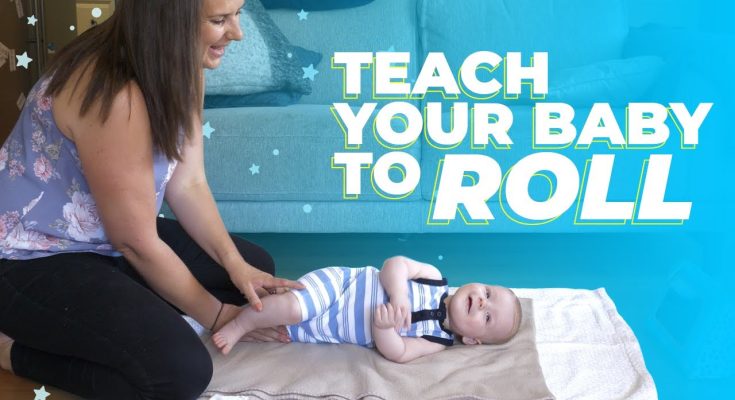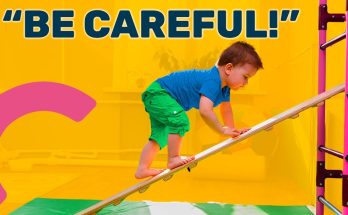One of the most exciting milestones in your baby’s development is learning to roll over. This skill is an essential step toward crawling, sitting, and eventually walking. Most babies begin rolling over between 3 to 6 months of age, but each child develops at their own pace. Encouraging your baby to roll over through play and practice can help strengthen their muscles, improve coordination, and boost their confidence.
If you’re eager to help your baby master this skill, here are four effective tips to teach your baby to roll over.
1. Encourage Tummy Time
Tummy time is one of the most important exercises for helping your baby develop the strength needed for rolling over. It strengthens their neck, shoulder, arm, and core muscles, which are essential for movement.
How to Do It:
- Place your baby on their tummy for short sessions throughout the day. Start with a few minutes and gradually increase the duration as they become more comfortable.
- Use soft blankets or a play mat to provide a comfortable surface.
- Get down to their level and talk, sing, or make eye contact to keep them engaged.
- Place colorful toys or a baby-safe mirror in front of them to encourage reaching and movement.
Why It Works:
Tummy time builds the strength necessary for your baby to lift their head, push up on their arms, and eventually roll over.
2. Use a Toy to Motivate Movement
Babies are naturally curious and love reaching for objects that catch their attention. Using a favorite toy can be a great way to encourage rolling over.
How to Do It:
- Place your baby on their back or tummy.
- Hold a bright-colored toy, rattle, or soft stuffed animal slightly out of their reach.
- Slowly move the toy from one side to the other, encouraging them to shift their weight and attempt to roll.
- Cheer and clap when they show effort or movement to reinforce positive behavior.
Why It Works:
Babies are more likely to roll over when they are motivated by visual stimulation and excitement. This trick also helps improve hand-eye coordination and body awareness.
3. Guide Your Baby’s Movements
Sometimes, babies need a little extra help learning the mechanics of rolling over. Gently assisting their movements can help them understand the motion and gain confidence.
How to Do It:
- Place your baby on their back.
- Gently bend one knee toward their tummy and help them roll onto their side.
- Support their movement by lightly guiding their hips or shoulders.
- Once they reach their side, let them finish rolling onto their tummy with minimal assistance.
- Repeat this process several times to help them get used to the motion.
For tummy-to-back rolling, you can:
- Place your baby on their tummy.
- Help them shift their weight to one side by tucking one arm under their chest.
- Slowly guide them as they roll onto their back.
Why It Works:
This technique allows babies to feel the rolling motion, helping them understand how to use their body to roll independently.
4. Reduce Friction and Provide Support
Some babies struggle to roll over due to the surface they are on. Reducing friction and providing the right support can make rolling easier.
How to Do It:
- Place your baby on a firm but soft surface, like a play mat or carpet.
- Use a rolled-up towel or blanket under their hips or back to slightly tilt them to one side, making rolling easier.
- Try dressing them in lightweight clothing to reduce friction against the mat.
- Position them on their side first as a starting point for rolling practice.
Why It Works:
A slight incline or less friction helps babies initiate the rolling motion with less effort. Over time, they will build the strength to roll on their own.
Bonus Tips for Success
✔ Make It Fun: Babies learn best through play. Keep sessions engaging with smiles, tickles, and praise.
✔ Practice Daily: Short, frequent practice sessions help reinforce skills. Even 5-10 minutes a few times a day can make a big difference.
✔ Don’t Force It: If your baby gets frustrated, take a break and try again later. Each baby progresses at their own pace.
✔ Ensure a Safe Space: Always practice on a soft, safe surface to prevent injury. Never leave your baby unattended on elevated surfaces.
When Will My Baby Roll Over?
Every baby is different, but here’s a general timeline:
- 2-3 months: Baby starts lifting their head during tummy time.
- 3-4 months: Baby may begin rolling from tummy to back.
- 4-6 months: Baby starts rolling from back to tummy.
If your baby hasn’t started rolling over by 6 months, it’s a good idea to discuss their development with a pediatrician.
Final Thoughts
Rolling over is an exciting milestone that prepares your baby for crawling and further mobility. By incorporating tummy time, toy motivation, guided assistance, and reducing friction, you can gently encourage your baby to develop this skill. Be patient, celebrate small progress, and most importantly, enjoy this special time with your little one.
With consistent practice and lots of encouragement, your baby will soon be rolling over confidently—opening the door to even more developmental milestones!



